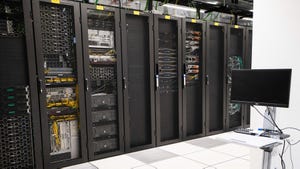South Korea Eyes More Nuclear, Renewable Power as Data Center Demand SurgesSouth Korea Eyes More Nuclear, Renewable Power as Data Center Demand Surges
Renewable and nuclear power feature prominently in a new energy proposal from the South Korean government.
May 31, 2024

(Bloomberg) -- South Korea should target major additions of renewables and nuclear power by late next decade to curb emissions and meet surging demand from data centers to semiconductor manufacturing, according to a government proposal.
The world’s eighth-largest emitter can aim to lift the share of renewables in its power mix to almost a third by 2038 from about 9% in 2022 and make nuclear the country’s largest source of electricity generation, a document published Friday showed. Coal and natural gas would decline sharply under the plans.
Hitting the targets would require South Korea to build a further 4.9 GW of nuclear power capacity by 2038, in addition to 5.6 GW of reactors currently under construction, according to the strategy, which was proposed by the energy ministry’s expert committee.
Further proposals will be needed on upgrading existing energy infrastructure, according to the panel. “The expansion of the grid is the most critical challenge we face today,” Jerng Dong-wook, chairman of the ministry’s committee, told reporters in Seoul.
The plans will require further government scrutiny, parliamentary debate and public hearings before a strategy is finalized.
Electricity demand in the nation is forecast to double by the end of the decade on last year’s total, driven by power consumption from energy-hungry industries including chipmaking. South Korea this month set out a $19 billion package of incentives aimed at boosting semiconductor manufacturing.
Three new nuclear reactors each with 1.4 GW of capacity should be considered, along with a 700 MW small modular reactor, according to the proposed strategy.
President Yoon Suk Yeol was elected in 2022 after pledging to support nuclear and to use the power source to help meet climate targets. South Korea has vowed to cut emissions by 40% from 2018 levels by 2030.
Read more about:
Asia-PacificAbout the Author
You May Also Like









